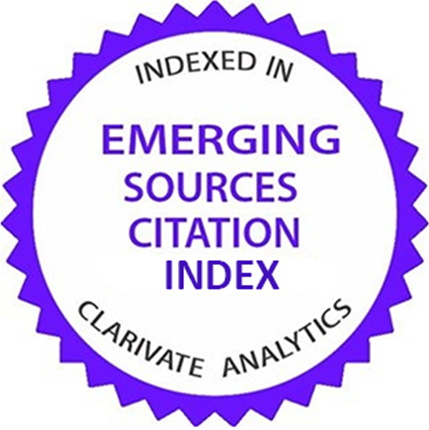Assessing the risk perception of COVID-19 among non-infected people attending emergency departments of selected hospitals in western Iran
Abstract
Objective: It is important to know people’s perceptions of the risks related to coronavirus disease 2019 (COVID-19) for controlling the pandemic. This study aims to assess the risk perception of COVID-19 among non-infected people referred to emergency departments (ED) of hospitals in Khorramabad, Iran during the pandemic and its related demographic factors.
Methods: This is descriptive/analytical study with a cross-sectional design. Participants were 380 adults referred to the ED of four hospitals (Shohadaye Ashayer, Shahid Rahimi, Asali, and Shahid Madani) in Khorramabad city in 2021 who were not infected by COVID-19. For data collection, the risk perception of COVID-19 questionnaire was used. Data were described using mean, standard deviation, frequency, and percentage. Chi-squared test was used in SPSS v.22 software to find the related demographic factors.
Results: It was found that 5 people (1.3%) had a moderate perception, 206 (54.2%) had good perception, and 169 (44.5%) had high perception. No one had poor risk perception. According to them, “own knowledge and experience” was the most effective factor in preventing COVID-19 followed by “the advice of experts in the media” and “the advice of friends and family”. Chi-squared test results showed a significant difference in risk perception among people in terms of age (P=0.002) and marital status (P=0.001); the age group <25 years and single people had lower risk perceptions.
Conclusion: The risk perception of COVID-19 in people referred to the EDs in western Iran is at good level but is not high. It is necessary to improve their risk perception by education and increasing awareness on social media.
2. Wang D, Hu B, Hu C, Zhu F, Liu X, Zhang J, et al. Clinical characteristics of 138 hospitalized patients with 2019 novel coronavirus-infected pneumonia in Wuhan, China. JAMA. 2020;323(11):1061-9.
3. Lai CC, Shih TP, Ko WC, Tang HJ, Hsueh PR. Severe acute respiratory syndrome coronavirus 2 (SARSCov-2) and corona virus disease-2019 (COVID-19): the epidemic and the challenges. Int J Antimicrob Agents. 2020;55(3):69-74.
4. Shahin M, Hussien R. Risk perception regarding the COVID-19 outbreak among the general population: a comparative Middle East survey. Middle East Curr Psychiatry. 2020;27(1):71.
5. Cori L, Bianchi F, Cadum E, Anthonj C. Risk perception and COVID-19. Int J Environ Res Public Health. 2020;17(9):3114.
6. Dryhurst S, Schneider CR, Kerr J, Freeman ALJ, Recchia G, Van der Bles AM, et al. Risk perceptions of COVID-19 around the world. J Risk Res. 2020;23(7-8):994-1006.
7. Samadipour E, Ghardashi F. Factors influencing Iranians' risk perception of Covid-19. J Mil Med. 2020;22(2):122-9
8. He S, Chen S, Kong L, Liu W. Analysis of risk perceptions and related factors concerning COVID-19 epidemic in Chongqing, China. J Community Health. 2021;46(2):278-85.
9. Alqahtani MMJ, Arnout BA, Fadhel FH, Sufyan NSS. Risk perceptions of COVID-19 and its impact on precautionary behavior: a qualitative study. Patient Educ Couns. 2021;104(8):1860-7.
10. Mertens G, Gerritsen L, Duijndam S, Salemink E, Engelhard IM. Fear of the coronavirus (COVID-19): predictors in an online study conducted in March 2020. J Anxiety Disord. 2020;74:102258.
11. Rubaltelli E, Tedaldi E, Orabona N, Scrimin S. Environmental and psychological variables influencing reactions to the COVID-19 outbreak. Br J Health Psychol. 2020;25(4):1020-38.
12. Ding Y, Du X, Li Q, Zhang M, Zhang Q, Tan X, et al. Risk perception of coronavirus disease 2019 (COVID-19) and its related factors among college students in China during quarantine. PLoS One. 2020;15(8):e0237626.
13. Zhong Y, Liu W, Lee TY, Zhao H, Ji J. Risk perception, knowledge, information sources and emotional states among COVID-19 patients in Wuhan, China. Nurs Outlook. 2021;69(1):13-21.
14. Jahangiry L, Bakhtari F, Sohrabi Z, Reihani P, Samei S, Ponnet K, et al. Risk perception related to COVID-19 among the Iranian general population: an application of the extended parallel process model. BMC Public Health. 2020;20:1571.
15. Taghrir MH, Borazjani R, Shiraly R. COVID-19 and Iranian medical students; a survey on their related-knowledge, preventive behaviors and risk perception. Arch Iran Med. 2020;23(4):249-54.
16. Schneider CR, Dryhurst S, Kerr J, Freeman ALJ, Recchia G, Spiegelhalter D, et al. COVID-19 risk perception: a longitudinal analysis of its predictors and associations with health protective behaviors in the United Kingdom. J Risk Res. 2021;24(3-4):294-313.
17. Attema AE, L'Haridon O, Raude J, Seror V; COCONEL Group. Beliefs and risk perceptions about COVID-19: evidence from two successive French representative surveys during lockdown. Front Psychol. 2021;12:619145.
18. Yeung NC, Lau JT, Choi KC, Griffiths S. Population responses during the pandemic phase of the influenza A (H1N1) epidemic, Hong Kong, China. Emerg Infect Dis. 2017;23(5):813-5.
19. Vartti AM, Oenema A, Schreck M, Uutela A, de Zwart O, Brug J, et al. SARS knowledge, perceptions, and behaviors: a comparison between Finns and the Dutch during the SARS outbreak in 2003. Int J Behav Med. 2009;16(1):41.
20. Abdelrahman M. Personality traits, risk perception, and protective behaviors of Arab residents of Qatar during the COVID-19 pandemic. Int J Ment Health Addict. 2020;1-12.
| Files | ||
| Issue | Vol 7 No 3 (2023): Summer (July) | |
| Section | Original article | |
| DOI | 10.18502/fem.v7i3.13822 | |
| Keywords | ||
| Coronavirus Infectious Diseases Risk Factors | ||
| Rights and permissions | |

|
This work is licensed under a Creative Commons Attribution-NonCommercial 4.0 International License. |










